Facts about the animal kingdom
Learn more about facts about the animal kingdom by exploring our site and become a true expert on the animal kingdom. You'll find content created for the best professionals with pictures, videos and opinions.
1.140 articles
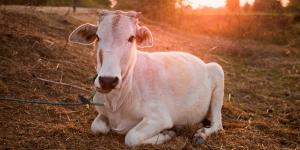
Updated
Updated
Hindus all over the world revere and worship cows. In fact, in India, cows are considered to be a manifestation of the Mother Goddess and a sacred animal that provides life-sustaining milk, considered the divine prasadam or holy offering.
In India, the cow is a holy, maternal figure revered as a symbol...
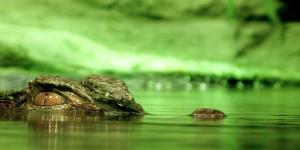
Updated
Updated
Many people believe the terms alligator and crocodile are synonyms, but they are not the same animal. They do have significant similarities that clearly distinguish them from other reptiles: They are really fast in the water, they have very sharp teeth and extremely powerful jaws, and they are very...

Updated
Updated
Dromedaries and camels are very well-known animals. Even if they don't live all around the world, there are more than a few films set in the desert that do feature these animals, either carrying people or packages. Although both animals are popular, one of the most common questions when learning about...

Updated
Updated
Both the wallaby and the kangaroo are Australian marsupials: after a short period of gestation in the womb, their young complete their development in their mother's abdominal pouch. They cling to the mammary glands for about 9 months until they can venture out of the pouch, with the little ones only returning...

Updated
Updated
Have you ever wondered what are the 10 most venomous animals in the world? There are hundreds of animals that can be deadly for humans, although the potency or the effects of their venom is often unknown to most of us.
Remember, it takes effort for animals to inject venom, and it is a waste of their energy....

Updated
Updated
When you get nervous at the sight of a wasp or a bee flying towards you, they can both look almost identical in terms of appearance. However, nothing is further from the truth. Wasps and bees are very different insects in terms of their morphology, diet, and behavior.
In this AnimalWised article we will...

Updated
Updated
Some creatures seem to be almost as old as planet Earth itself. Although they aren't, it's true that some animal species have survived the most extreme circumstances, from natural disasters to mass extinctions. They are often referred to as "living fossils".
They have been able to survive by evolving particular...

Updated
Updated
Are you looking for examples of herbivorous animals? Do you want to learn all about their classification?
This AnimalWised article will tell you about herbivores with the help of well-known examples, some more surprising ones, and a few fun facts. This way, you'll know all about their main characteristics,...

Updated
Updated
In the wild, animals are in constant search of a companion to mate and reproduce with. The process of mate selection, which we humans call "courtship", starts by noticing an individual and then courting them; if the ritual is successful, the pair may reproduce.
Love is everywhere, even in the animal kingdom. Animals...

Updated
Updated
The European goldfinch or Carduelis carduelis is a very popular bird among ornithologists, as it emits a beautiful and unique song and delights with its colorful plumage. If you're wondering how to differentiate between a male and a female goldfinch, keep reading this AnimalWised article to find out.
In...
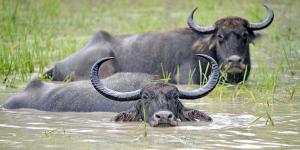
Updated
Updated
The scientific name for the impressive water buffalo is Babulus bubalis. This species is also known by several other names, most of them referencing its habitat. They include:
Asian buffalo
Indian wild buffalo
River buffalo
Swamp buffalo
Wild Asian water buffalo
Wild water buffalo
Water buffaloes are...

Updated
Updated
Dogs usually tremble for two reasons: Because they are cold, or because they are scared and afraid.
However, Greyhounds are a breed with very special characteristics. While the previous general rule applies to them, it is also true that Greyhounds can tremble for several other reasons. There are several...

Updated
Updated
Can you tell how many reindeer pull Santa Claus's sleigh?
Depending on who you ask, it's eight, nine, or twelve reindeer. All these different answers come from different sources, like folk stories, poems, movies, and of course the song "Rudolph the Red-Nosed Reindeer". But what version is right? Who are...

Updated
Updated
Giant pandas (Ailuropoda melanoleuca) are big and beautiful mammals that on average weigh between 100 and 115 kilograms, that is, 220 to 255 pounds - although they can get bigger. Being omnivorous animals, they can feed on any organic substance, plant or animal - although bamboo is by far their favorite.
This...
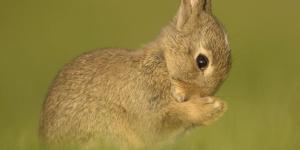
Sometimes people who have adopted a rabbit wonder "why does my rabbit lick itself?" In fact, this question has more than a single answer.
Rabbits do not usually communicate using sounds, although they are able to produce a limited range. Due to the fact that these animals are highly preyed upon in their natural...

Knowledge of the animal kingdom means knowledge of our environment; human life is not conceivable without interaction with nature. Understanding nature helps us to better understand ourselves, our instincts and our processes. However, when we explore the mysteries of the animal kingdom, we might find confusing...

Does the name Hachiko sound familiar to you?
Hachiko was a loyal Japanese dog that waited at a train station for 10 years for the arrival of its owner, who had died while working as a teacher. This dog's faithfulness went on to achieve worldwide fame, and it has a statue at the same station where it...
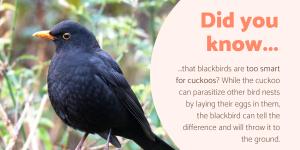
Old World blackbirds are various species in the genus Turdus. One of the most representative species is the common blackbird (Turdus merula) found throughout Europe, North Africa and Western Asia. Although they are known as blackbirds, not all are completely black. They are a type of true thrush with...

Seals are semi-aquatic mammals, spending some of their time on land and some of their time in the water. They spend time in each environment for different reasons, all related to necessary elements of their survival. This includes both the individual and their species. Seal reproduction is one of the...

When we see images of seals, their bodies looks sleek, shiny and slippery. As aquatic animals, it appears as if they might have skin which is similar to other mammals of the sea such as the dolphin. This leads AnimalWised to ask does a seal have fur?
While it is not the same as all other mammals, seals...

Sharks have been a dominant force in marine ecosystems for over 400 million years. Originating in the Paleozoic Era, these resilient predators survived multiple mass extinctions, evolving into a spectacular variety of prehistoric forms. Among them were ancient sharks with incredible adaptations for hunting...
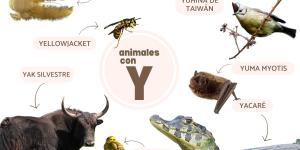
Classifying animals is a very difficult task. Taxonomy is the science behind organizing living organisms into different groups. This is for various reasons, but the main one is to better understand them. Unfortunately, it is a complicated, nebulous and constantly fluctuating science which can make your...

What makes lions, sharks, and eagles such effective hunters? The answer lies in their carnivorous nature. Carnivorous animals get their energy and nutrients primarily by eating meat. From tigers to spiders, meat-eating animals exist across all major animal groups and play crucial roles in maintaining ecological...
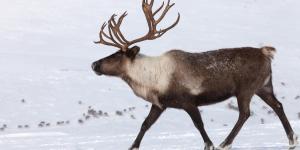
Reindeer (known as caribou in North America) are hardy animals that have adapted to some of the coldest environments on Earth. They belong to the deer family (Cervidae) and live throughout the Northern Hemisphere. Unlike other deer, both males and females grow antlers, though males develop larger ones....
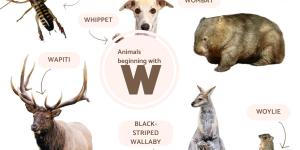
Animals can be classified in many different ways, but doing so alphabetically can provide certain challenges. Firstly. each animal has many different names in different languages. Even in the same language, some animals can have numerous names. These are often determined by geographical location with...

Seals are marine mammals found in all oceans around the world, and even in some freshwater areas. As members of the Phocidae family, seals are known for their thick blubber, flipper-like limbs, and powerful swimming skills. There are many different types of seals, each with its own traits, habitats, and...

Did you know hippos are one of the most dangerous animals in Africa despite their cuddly appearance? These massive, water-loving mammals are full of surprises. These mammals are more than river-dwellers with impressive yawns. Hippopotamuses shape entire ecosystems through their daily activities. Despite...
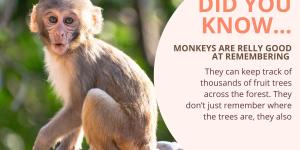
Most people picture monkeys swinging through trees and munching on bananas. It is a fun image, and sometimes true, but there is much more to them. These animals are smart, social, and full of surprises. They solve problems, build strong group bonds, and adapt to all kinds of environments. Monkeys aren’t...

The Amazon River basin is the vast area which covers the river itself and all its tributaries. It is the largest river basin in the world, being home to the greatest diversity of fish species found in a single freshwater system. This diversity extends to approximately 7,000 individual species with an estimated...

The polar bear (Ursus maritimus) are apex predators in their ecosystem and considered to be one of the deadliest carnivores in the world. Not only deadly to their prey animals, polar bears provide a serious risk to humans. This risk has been intensified in recent years thanks to global warming. Bears...
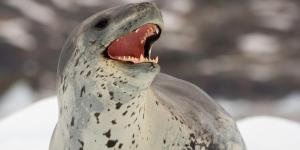
The leopard seal (Hydrurga leptonyx) is well adapted to its habitat, living both on land and sea. It has adapted limbs known as flippers which allow the animal to both swim gracefully in the water and walk not so gracefully on land. Their powerful jaws make them adept hunters, catching fish, cephalopods,...

The pine processionary caterpillar, the larval stage of a specific moth, is known for causing two distinct problems. First, these caterpillars feed on the needles of pine trees, and sometimes other conifers, which can weaken the trees and even lead to their death over time, especially if there are many...

Seals are aquatic mammals that live in both marine and freshwater environments. To survive in the water, they have various evolutionary adaptations to make them adept swimmers. One of the most obvious is their flippers. While some may wonder if seals have paws, the answer is not any more. Seals are also known...

It's interesting to consider what eats spiders. Despite their predatory skills, spiders occupy a middle ground in the food web. They hunt insects and sometimes small animals, but they are also prey for a diverse range of creatures. From common birds and lizards to less expected predators, many animals consume...

Zebras may look like striped horses, but there’s a lot more to them than meets the eye. These horse relatives have evolved adaptations that help them survive in environments with predators and changing conditions. From their digestive systems to their social structures, zebras showcase effective survival...

Guppies (Poecilia reticulata) are known for their colorful appearance and versatility, making them one of the most common aquarium fish in the world. Another characteristic that makes them so popular is that they are freshwater fish. It is generally easier to keep freshwater fish in aquariums than their...

The total area of China's maritime zone is somewhere between 1 to 5 million km². Such a large discrepancy is due to the contestation over ownership of waters near China's coastline. Even with conservative estimates, China has a lot of ocean with an incredible level of biodiversity contained within. In addition...
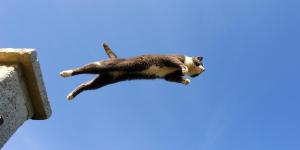
Cats are often celebrated for their incredible agility and their almost legendary ability to survive falls from high places. But it's natural to wonder, where is the limit? The science behind how cats manage to survive these falls is a fascinating blend of evolutionary adaptations, their quick reflexes,...
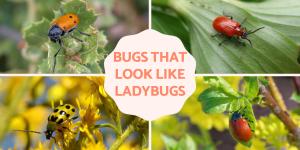
Ladybugs are a type of beetle belonging to the arthropod family Coccinellidae. More than 6,000 species have been identified and their populations are distributed globally. A type of beetle, they are relatively small at only around 10 mm long. They are characterized by their colorful patterns on their elytra,...

For millions of years, sea turtles have been vital players in our oceans' ecosystems. These incredible reptiles, encompassing seven distinct species, each boast unique characteristics, habitats, and behaviors, from the colossal leatherback to the tenacious Kemp's ridley. Despite their varied sizes, diets,...
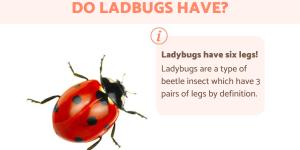
The family Coccinellidae is made up of insects known as ladybugs, ladybirds or lady beetles. Which term you use generally depends on your location, with ladybug being the preference in North America. The reason for so many names is due to an incredible species diversity and population range. They are found...

Cockroaches have survived for over 300 million years, evolving into one of Earth's most resilient pests. With their ability to withstand radiation, survive without food for months, and squeeze through the tiniest cracks, they've earned their reputation as nearly indestructible. But nature has developed its...

Ladybugs are toxic, but their ability to cause harm to humans is minimal. There are more than 6,000 individual insect spcies in the family Coccinellidae, the family to which all ladybugs belong. Also known as ladybirds, ladybugs are noted for their colorful forewings known as elytra. They are often red with black...

Reptiles are some of the most diverse and ancient creatures on Earth, thriving in nearly every environment—from scorching deserts to dense rainforests. As cold-blooded vertebrates, they rely on their surroundings to regulate body temperature, and their unique adaptations have allowed them to survive for millions...
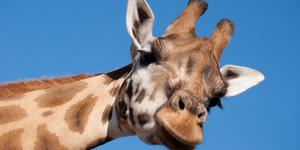
The giraffe, the tallest land mammals on Earth, has a life influenced by its environment and unique adaptations. They are born after falling almost 2 meters to the ground and grow to a height of up to 5.5 meters (18 feet), going through interesting changes as they develop. The big difference in lifespan...
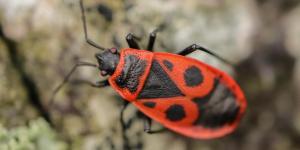
Firebugs are not poisonous and they are not known to carry any disease which is harmful to humans. Despite their alarming name, they do not pose any particular threat to our well-being. Belonging to the Pyrrhocoridae family, the firebug (Pyrrhocoris apterus) is native to Central Europe and Asia, particularly...
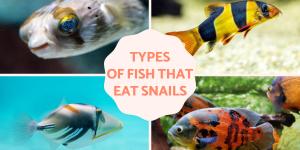
Aquatic ecosystems have a varied range of trophic interactions. This refers to the feeding habits of organisms, including predators, prey and parasites, among others. Predation on snails by certain fish acts as a regulatory mechanism that maintains population dynamics and prevents excessive proliferation....
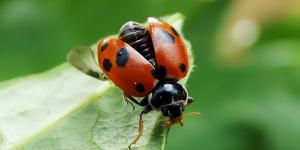
Ever had one of those cute, spotted ladybugs land on your finger and wondered if it could bite? The short answer is yes, but don't worry. While ladybugs do have tiny mouthparts capable of biting, they rarely break human skin and aren't interested in us as food. Their mandibles are designed for munching...

While it may appear as if your dog is howling for no reason, this is not the case. It may not be obvious, but understanding a dog's canine instinct and behavioral traits will help you to understand the reason for their howling. To do so, we need to look at the context of the howling. This can include the genetics...
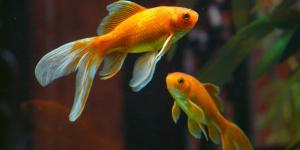
"Despite their global popularity, goldfish are often wrongly perceived as short-lived, disposable pets. In reality, these resilient fish can thrive for 10-15 years, or more, with attentive care. This raises a common question among owners: what is their typical lifespan, and how is it influenced by environment,...
